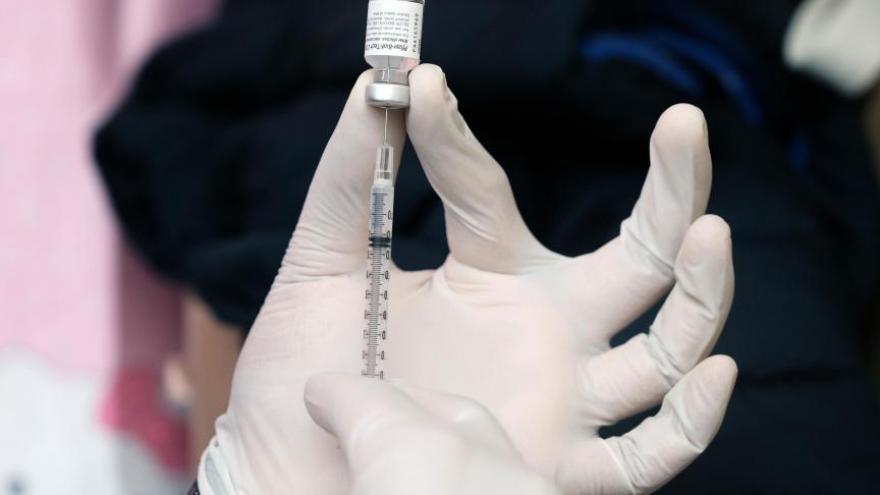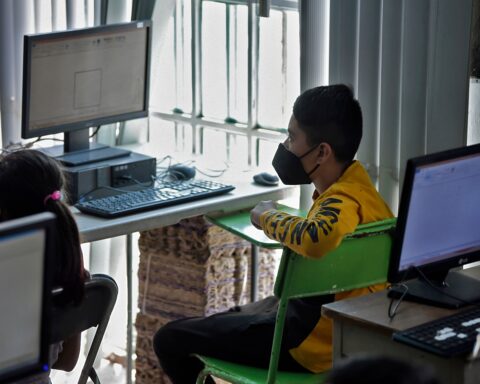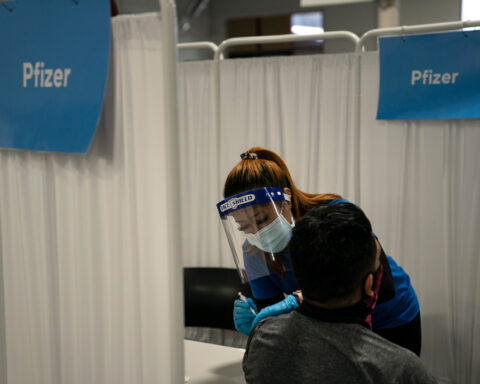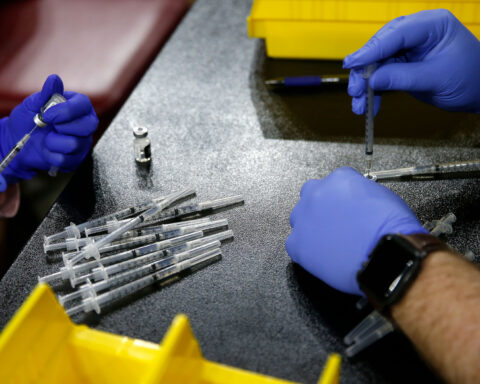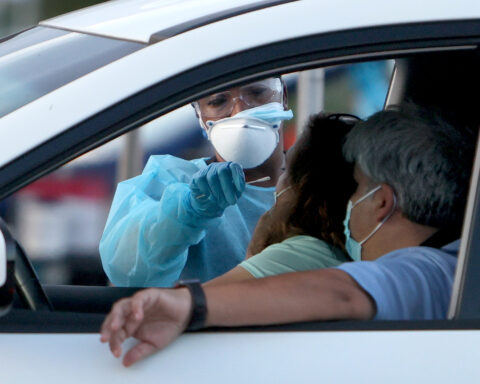First, the good news: The United States reported a record-high 4.6 million doses of vaccines administered in one day, according to data published Saturday by the Centers for Disease Control and Prevention.
“Amazing Saturday! +4.63M doses administered over total yesterday, a new record,” tweeted Dr. Cyrus Shahpar, the White House Covid-19 data director. “More than 500K higher than old record last Saturday. Incredible number of doses administered.”
The problem is that more than 75% of the US population isn’t fully vaccinated, according to CDC data Saturday.
Now the bad news: For the third straight week, new Covid-19 cases and hospitalizations are increasing, according to CDC Director Dr. Rochelle Walenky.
“Cases and emergency room visits are up,” Walensky said Friday. “We are seeing these increases in younger adults, most of whom have not yet been vaccinated.”
The B.1.1.7 variant isn’t just more contagious than the original strain of coronavirus — it’s now the dominant strain the US.
Experts say the B.1.1.7 variant might cause more severe disease and may also be more deadlier.
In the past week, the US averaged more than 68,000 new Covid-19 cases every day, according to data from Johns Hopkins University.
That’s up more than 20% since the March 10 seven-day average.
Nationwide, more Americans age 18 to 64 have gone to emergency departments for Covid-19 complications, Walensky said.
She said the trends are “magnified” in one part of the country: the Upper Midwest.
“CDC is working closely with public health officials in this region to understand what is driving these cases and how we can intervene,” Walensky said.
‘A life and death race’
Florida has the highest number of reported B.1.1.7 cases, according to the CDC, followed by Michigan, which is reporting thousands of new Covid-19 cases daily.
Michigan health officials say they’re in the middle of another Covid-19 surge.
“This B.1.1.7 variant…is more contagious, and I think there’s just fatigue from this pandemic out there so a lot of people don’t wear masks, don’t social distance, so we’ve basically taken a step back in Michigan,” said Dr. Paul Offit, director of the Vaccine Education Center at the Children’s Hospital of Philadelphia.
“It’s really frustrating, because we’re almost there,” he said. “We have to hang in there for the next two months and we’re not doing that.”
Some Michigan hospitals are delaying and rescheduling non-emergency procedures on a “case-by-case basis,” a spokesperson for the Michigan Health & Hospital Association said.
“Hospitals want everyone to get the care they need and only reschedule procedures as a last resort,” John Karasinski said. “We want to stress that hospitals are safe for all who need care and any individual with an emergency medical need should seek care immediately.”
In both Michigan and Minnesota, “there is concern about transmission in youth sports — both club sports, as well as sports affiliated in schools,” Walensky said Friday.
Minnesota health officials warned the state was seeing a “sharp increase” in Covid-19 cases, saying it’s “more important than ever” to keep wearing a mask and physical distancing.
Ohio Gov. Mike DeWine said the number of Covid-19 cases, hospitalizations and ICU admissions in his state are all rising.
“We’re moving now in the wrong direction,” DeWine said Thursday. “More than half of our counties, 53, have seen increases.”
“We can still turn this around if more people continue to get vaccinated,” he said. “This is a race. We are in a race. And it’s a life-and-death race.”
New York loosens physical distancing rules for some students
By contrast, New York is seeing a drop in hospitalizations and its lowest 7-day average positivity rate since early December, according Gov. Andrew Cuomo’s office.
Hospitalizations are the lowest since December 2 at 4,083, while New York’s statewide positivity rate dipped just below 3%. New York City’s 7-day positivity rate also dropped to its lowest level since December 1, hitting 3.58%, the governor’s office said.
Those numbers, combined with recent CDC guidance, prompted the New York Health Department to update its physical distancing rules from 6 feet to 3 feet for elementary, middle, and high schools with low and moderate risk of Covid-19 transmission.
Schools with substantial risk of transmission may also maintain a distance of 3 feet but must also implement cohorting when possible. Cohorting is when groups of students are kept together and with the same staff throughout the day to reduce the spread of Covid-19, according to the CDC.
Middle and high schools with high risk of transmission must maintain 6 feet apart when cohoritng is not possible, the state said.
However, high-risk elementary schools can still follow the 3 foot requirement.
“Evidence indicates that there is lower susceptibility and incidence of COVID-19 among younger children than compared to teenagers; therefore, in-person instruction represents less risk of on-site transmission in elementary schools compared to middle and high schools,” the health department said.
There are still some times when 6 feet must be maintained, the state said, including between students and teachers, between students when they are eating, and when students are in common areas outside of classrooms such as in gymnasiums, cafeterias and hallways, according to the new rules.
These new social distancing guidelines come after the CDC made similar recommendations in March.
CNN has reached out to the New York Department of Education and the New York City Department of Education for comment.
More proof that vaccines are safe and effective
While more young, unvaccinated adults get hospitalized with Covid-19, the number of elderly Americans getting hospitalized or dying from Covid-19 keeps decreasing.
Health experts say that’s because elderly people are more likely to be vaccinated than younger adults.
More than 78% of people age 65 and over have received at least one dose of a vaccine, and 60% have been fully vaccinated, according to CDC data.
And there’s growing evidence showing how safe the vaccines are for adults of all age groups.
Fewer than 1 in 28,000 people who got a Covid-19 vaccine — or less than 0.004% — have reported serious adverse reactions, according to data from the Department of Health and Human Services’ Vaccines Adverse Event Reporting System, or VAERS.
Vaccine providers “are encouraged to report any clinically significant health problem following vaccination to VAERS, whether or not they believe the vaccine was the cause,” the VAERS website said.
The good news is even when severe reactions do happen, “they usually happen in the first 30 minutes,” said vaccinologist Dr. Peter Hotez of the Baylor College of Medicine.
“That’s why vaccine sites keep people there for 15 to 30 minutes afterward,” he said.
The CDC recommends people who have had a history of severe allergic reactions stay for 30 minutes after vaccination. Others could leave after 15 minutes.
All places administering vaccines must be armed with epinephrine to quickly combat any cases of anaphylaxis, the CDC said.
The Surgeon General said there are simple steps to end this pandemic:
“One: Get vaccinated as soon as you can,” Dr. Vivek Murthy said. “And two: Help the people you care about get vaccinated as well.”

